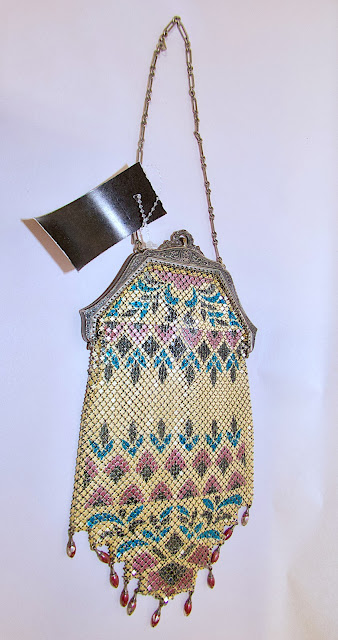This exquisite enamel antique handbag is from Mandalian Manufacturing Company, founded by Turkish immigrant Sahatiel Gabrabed Mandalian. Coming to the United States in 1890, in 1906 he entered into a partnership with Eugene A. Hawkins and started producing mesh bags as Mandalian and Hawkins. Mandalian became the sole owner of the company in 1915. Some say that the intricate designs on his handbags reflect the traditional designs found on rugs woven in his native Turkey. Of beautifully crafted metalwork with the company's patented "Lustro-Pearl" finish, this pretty purse would be a prize for any collector of vintage clothing or the perfect accessory for a Halloween flapper costume.
Mandalian was granted 14 patents from 1921 to 1935. While most concern improvements in the manufacturing and enameling of mesh bags and accessories, he also received patents for
tap dancing shoes and an improved movie projection screen.
Mandalian's sturdy and colorful purses were popular in the 1920s and 30s. In 1944 the company was sold to rival purse maker Whiting and Davis.
All posted items are for sale at Next-to-New but things can sell quickly!
15562-121

















